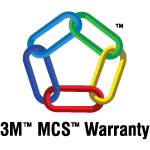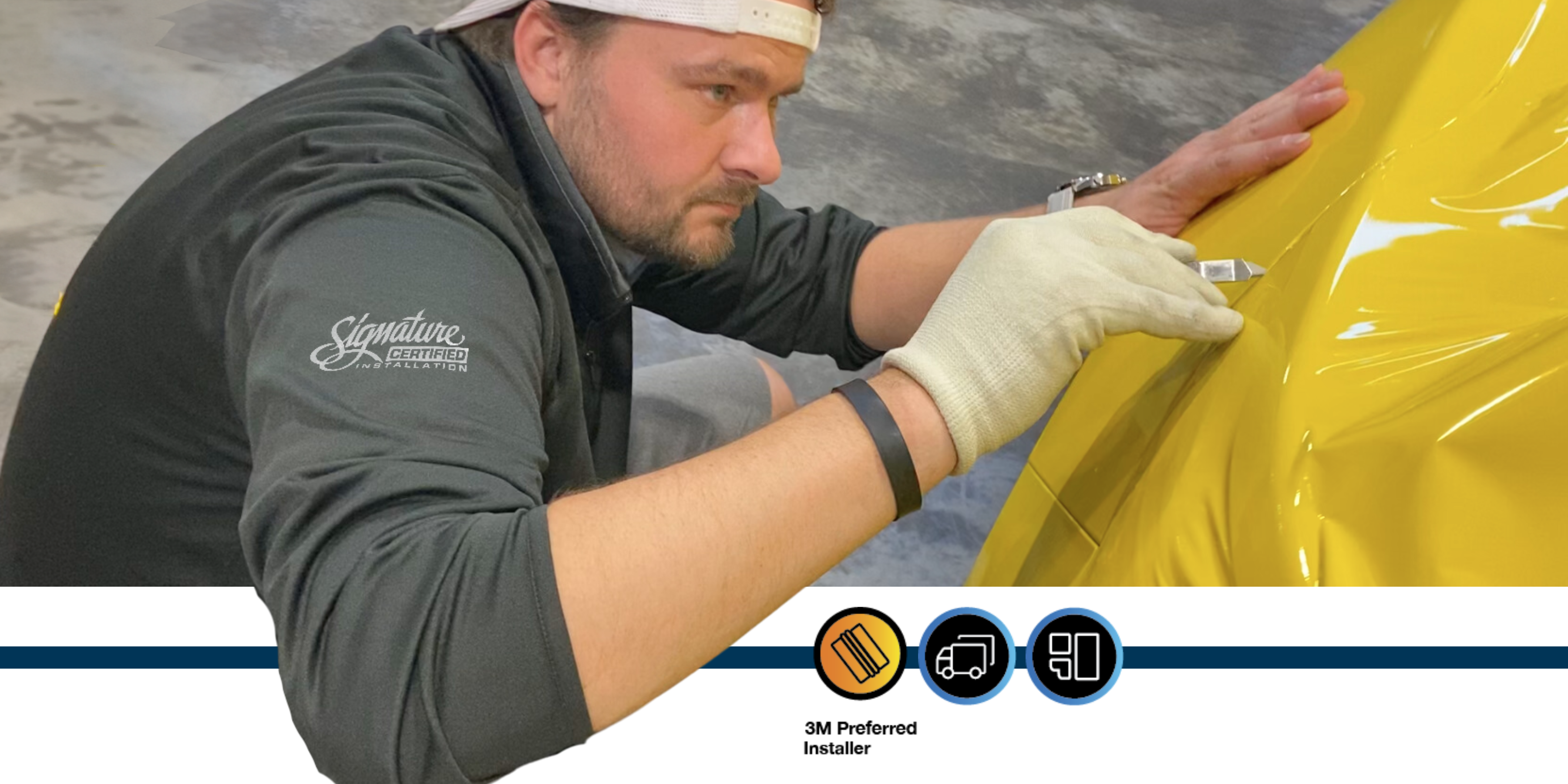The electric vehicle (EV) revolution is here and it’s transforming not only how companies operate their fleets, but also how they express their brands on the road. From delivery vans to service vehicles, businesses are rapidly adopting EVs to reduce emissions, lower operating costs, and meet sustainability goals.
With this shift, one big question has emerged: How do you wrap an electric vehicle safely and effectively?
While wrapping EVs follows many of the same steps as traditional gas vehicles, there are important technical, material, and design considerations that fleet owners and brand managers must understand before starting. At Signature Graphics, we’ve guided national brands through the transition to EV fleet graphics — ensuring every wrap looks exceptional, performs flawlessly, and supports the vehicle’s long-term functionality.
1. EV Wraps vs. Traditional Vehicle Wraps: What’s Different?
A vehicle wrap on an EV may look the same from the outside, but the engineering underneath is entirely different. Electric vehicles rely on high-voltage battery systems, advanced sensors, and lightweight composite materials designed to maximize range and efficiency.
That means your wrap must be more than just visually appealing — it must also:
- Comply with OEM specifications for heat dissipation and access points
- Avoid interference with sensors, charging ports, and airflow zones
- Utilize materials engineered for lower surface temperatures and static control
Partnering with a professional, 3M™ MCS™ Certified installer ensures every application respects the vehicle’s design and warranty requirements — without compromising performance or aesthetics.
2. Managing Thermal Sensitivity and Battery Safety
Thermal management is one of the most crucial aspects of EV design. The vehicle’s batteries and inverters generate heat that’s carefully dissipated through vents, radiators, or even body panels. Improper wrap placement or material selection could disrupt that delicate balance.
Signature Graphics’ installation technicians reference OEM diagrams and manufacturer bulletins to identify “no-wrap zones” and ensure the wrap doesn’t obstruct any venting or cooling surfaces.
We use premium cast vinyls engineered to withstand higher temperatures and to maintain adhesive integrity under variable heat loads. This protects both your branding and the vehicle’s performance — a balance that’s vital for fleet reliability.
3. Weight, Efficiency, and Material Science
Every pound counts when it comes to EV efficiency. Excess weight can reduce battery range, which in turn affects operating costs and sustainability metrics.
That’s why we select lightweight, high-performance materials that deliver strength and coverage without adding unnecessary mass. Modern wrap films weigh less than a fraction of a pound per square foot, making them ideal for electric fleets where aerodynamics and energy conservation matter.
Signature Graphics also uses non-conductive, pressure-sensitive adhesives to eliminate electrical interference or static buildup near sensitive systems — another subtle but important safeguard in EV applications.
4. Selecting the Right Wrap Materials for EVs
Not all vinyl films are created equal. EV wraps demand products that combine flexibility, durability, and environmental stability. Signature Graphics exclusively uses 3M™ premium cast films and UV-resistant overlaminates that deliver superior performance under demanding conditions.
When selecting your wrap material, consider:
- UV Resistance – Protects color vibrancy under extended sun exposure.
- Thermal Stability – Prevents warping or lifting under heat cycles.
- Conformability – Ensures smooth adhesion across complex EV contours.
- Sustainability – Choose films with recyclable liners and low-VOC manufacturing processes.
Each Signature Graphics wrap comes with the 3M™ MCS™ Warranty, guaranteeing color consistency, durability, and adhesion for years of reliable service — even under the evolving demands of electric mobility.
5. Work With Certified Installers
For companies investing in electric fleets, the benefits go far beyond fuel savings. Your EVs represent a visible statement of your brand’s commitment to sustainability and innovation.
A well-designed fleet wrap can help you:
- Communicate your company’s environmental goals to the public.
- Reinforce your brand consistency across both electric and combustion vehicles.
- Differentiate your business with a modern, forward-thinking aesthetic.
Signature Graphics’ design team understands how to balance bold visual impact with technical precision — ensuring your message stands out without compromising any vehicle components. From minimalist eco-friendly motifs to full wraps showcasing your brand’s story, we help bring your sustainability message to life.
6. Don’t Skip the Final Inspection
Once installation is complete, conduct a thorough walkthrough of each vehicle. Look for proper alignment, smooth edges, and clean application—especially around curves, door seams, and rivets. If anything looks off, address it immediately. Documenting the finished wrap with high-quality photos is a good way to confirm that all branding standards were met and to use in future marketing or training materials.
It’s also a good time to educate your drivers and team on proper wrap care, like avoiding high-pressure car washes or abrasive cleaning products. Simple maintenance steps can extend the life of your graphics and protect your investment.
7. Plan for the Long Term
Fleet branding isn’t a one-and-done project. Over time, wraps will fade, peel, or become damaged from road wear and tear. Building a plan for ongoing maintenance and future replacements helps you stay ahead of these issues. Keep records of installation dates, materials used, and warranty info so you know when it’s time for a refresh.
Consider keeping spare graphics on hand for quick fixes or touch-ups, especially for high-visibility or frequently used vehicles. Proactive maintenance means your fleet always presents a polished and professional image—no matter how many miles it’s covered.
Conclusion
With the right preparation, fleet branding can be one of your most effective marketing tools. Following a clear checklist helps you avoid common pitfalls, protect your investment, and ensure that every install is executed flawlessly.
At Signature Graphics, we offer end-to-end fleet branding solutions—from design and production to installation and logistics. Whether you’re wrapping five vans or 500 trucks, our team is ready to make the process smooth and stress-free.
Need help with your next fleet install?
Contact Signature Graphics to get started with a custom quote and project plan tailored to your brand.






















